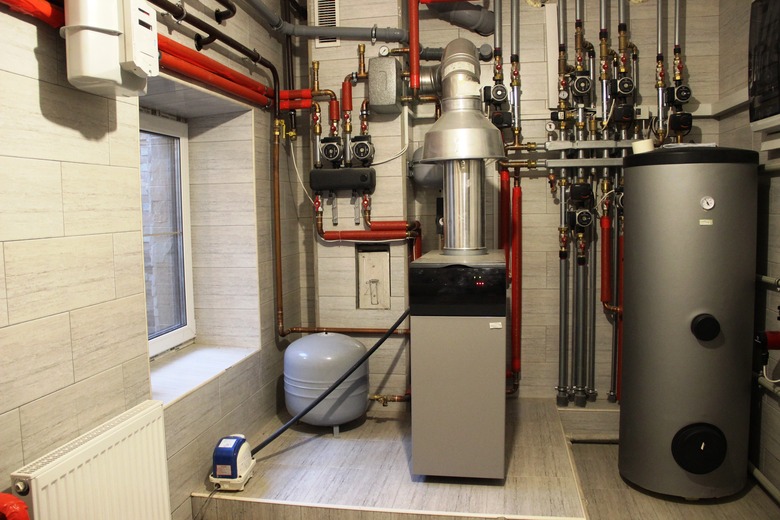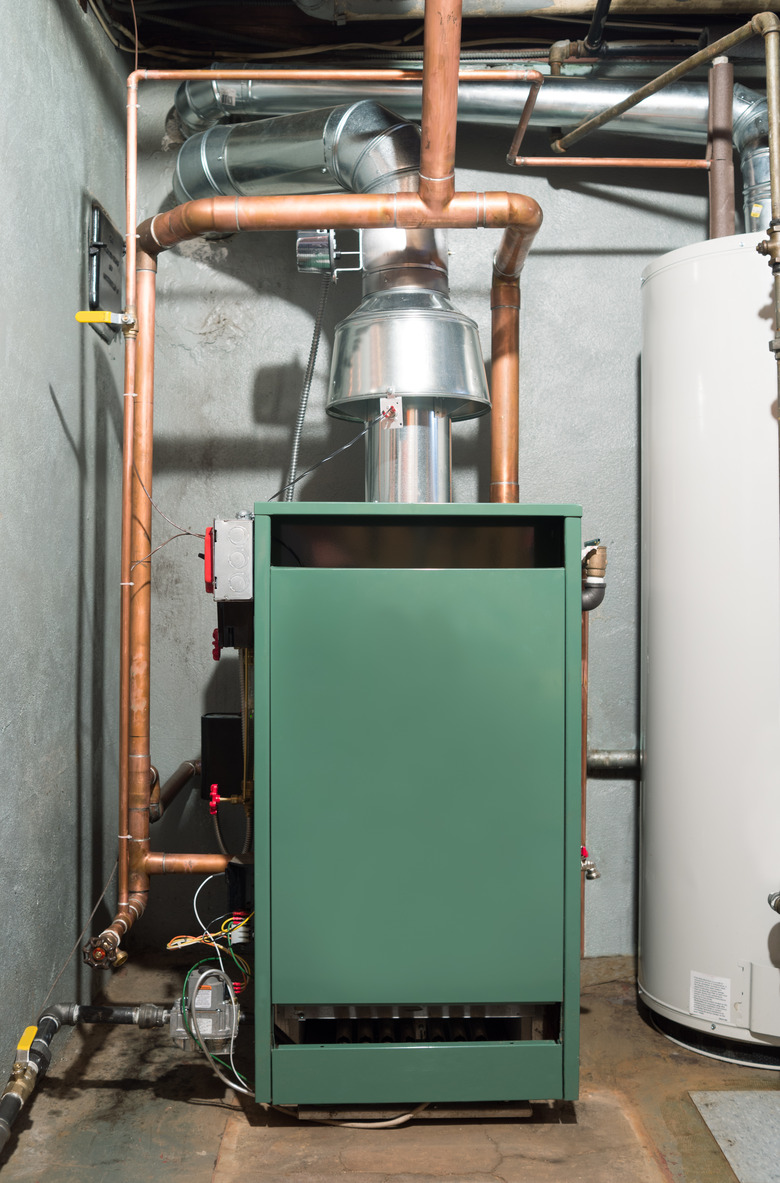Furnace Pilot Or Ignition Systems — Which Type Do I Have?
We may receive a commission on purchases made from links.
Any kind of engine or appliance that burns combustible fuel needs an ignition system to start combustion. Spark plugs do the job for gasoline-powered internal combustion engines, and diesel engines use glow plugs. Depending on when it was manufactured, your gas furnace could employ either of these basic technologies to ignite the gas, and if the furnace is very old, it could be making use of one of the original gas ignition methods: a standing pilot light.
Electronic ignition systems in furnaces don't work the same as they do in cars, but the principle is the same. A direct spark pilot, which is analogous to a spark plug, gets the gas burning by emitting a continuous barrage of sparks generated by an electronic spark generator, while hot surface ignition, which is analogous to a glow plug, works by heating up an element continuously until it reaches the temperature necessary for ignition. A standing pilot light is always burning and works like a match to light the gas that comes to the burner when the gas valve switches on.
If the igniter malfunctions, the furnace won't work, and depending on the type of pilot, you may be able to fix it without calling a service pro. If you aren't sure what type of pilot your furnace has, the first clue is the age of the furnace. Modern furnaces almost always have an electronic igniter, and there's an easy way to tell the two different types apart simply by listening to the furnace when it switches on. If your furnace has a standing pilot, you should be able to see it burning through a window in the combustion chamber.
Tip
Furnace ignition systems have telltale giveaways. A spark ignitor clicks, a standing pilot visibly burns and a hot surface ignitor works in stealth mode, being invisible and making no sounds.
The Standing Pilot Ignition System
The Standing Pilot Ignition System
The standing pilot is the traditional ignition method for gas furnaces, and it's still common on other gas appliances, such as water heaters, stoves and room heaters. A furnace with a standing pilot has a control knob, usually red, with three settings: "off," "on" and "pilot," and the pilot setting is midway between the other two. When the pilot is off, you relight it by setting the dial to "pilot" and pushing in the control knob.
When you push in the knob, gas starts flowing from the pilot tube opening, which is next to the burner, and you light it with a match or by pushing the button of a piezoelectric intermittent spark generator repeatedly. Once the flame starts, it heats a thermocouple immersed in the flame, which generates a small electrical current that flows to the gas valve, signaling it to stay open. If the thermocouple is faulty or not positioned properly, the pilot will go out, and that — along with a clog in the pilot tube — is one of the most common reasons standing pilot systems fail.
Homeowners can often replace a thermocouple or even a pilot assembly themselves and save the cost of calling an HVAC technician, which is a plus of having a furnace with a standing pilot. On the minus side, standing pilot systems waste gas, and gas furnaces that employ them are considered low to mid efficiency, with annual fuel utilization efficiency (AFUE) ratings of 80 or less. The AFUE rating is a measure of the percentage of the fuel that gets converted into usable heat, so 20 percent or more of the gas burned by a furnace with a standing pilot is wasted.
Two Types of Electronic Ignition Systems
Two Types of Electronic Ignition Systems
The intermittent spark igniter was the first type introduced to allow a standing pilot to be ignited without a match, and it was common in furnaces manufactured in the 1980s. Around that time and into the 1990s, some manufacturers, including Rudd and Rheem, equipped their furnaces with direct spark igniters, which were different from intermittent spark igniters in two ways: They worked electronically, not manually, and they ignited the gas in the burner, not in a pilot. They were among the first furnaces to replace the standing pilot with an electric spark igniter.
The hot surface ignition system came soon afterward and is the one found on virtually every new furnace today. Heat for ignition comes from a heating element, much like the one in an electric heater, that glows red-hot like a light bulb when electricity passes through it. Although the basic idea is simple, the furnace has to have a precise set of controls to delay the release of gas until the element is hot enough to ignite it and to switch off the element when the gas ignites. The entire ignition process can occur in as little as 15 seconds.
Some HVAC pros liken the ignition process of a furnace with a hot surface igniter to a well-choreographed dance. When the thermostat calls for heat, electricity flows to the igniter, which begins to heat up. The gas valve opens only after it has reached the temperature for ignition so as not to release any unburned gas, and the element stays on for a preset period to ensure ignition. The process is noise-free in contrast to direct spark igniters, which make a loud clicking noise that can continue for several seconds after the gas ignites. This clicking noise, by the way, positively distinguishes a furnace with a spark igniter from one with a hot surface igniter.
Troubleshooting a Gas Furnace Ignition System
Troubleshooting a Gas Furnace Ignition System
If you have an older furnace with a standing pilot and the pilot keeps going out, it may be a sign that it's time to replace the air filters because the pilot may not be getting enough air. If the pilot goes out immediately after you light it, it may be time to replace the thermocouple, clean the pilot tube or both. The thermocouple is an inexpensive part that you can purchase online or from an appliance dealer, and you can clean the pilot tube with a combination of compressed air and a pipe cleaner.
When an electric spark igniter fails, the fault is usually in the furnace control panel, and troubleshooting that is best left to a furnace repair technician. On the other hand, if the igniter begins clicking when the thermostat switches on the heating system but the main burners don't light, that's a problem with the gas supply. Make sure the main gas supply valve is on and if it is, call a service pro to diagnose problems with the gas valve or the control panel.
Hot surface igniters should be the most trouble-free of all ignition systems, but they commonly fail, and the problem is often contamination on the heating element. They are also somewhat fragile and often get broken during routine furnace maintenance. They are sensitive to overheating, which can happen when the air filters are dirty and airflow is restricted, and they break down more quickly when the furnace cycles on and off too often, which can happen if the furnace is too small for the house. This part of the furnace has a shorter service life, but typically, it is easy to replace if it fails.

